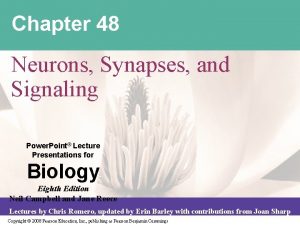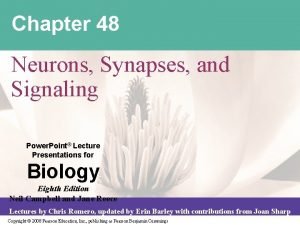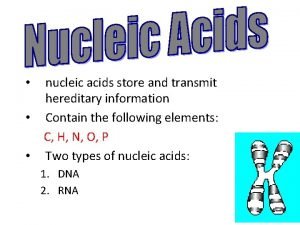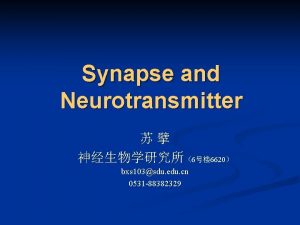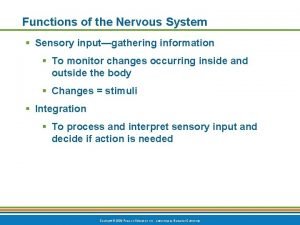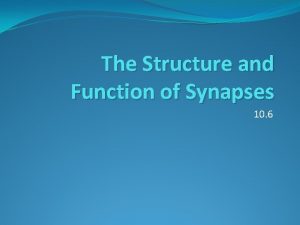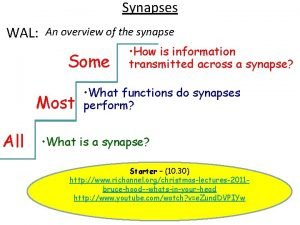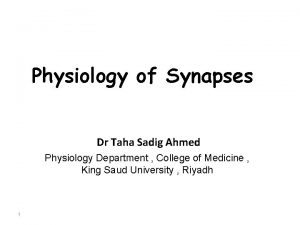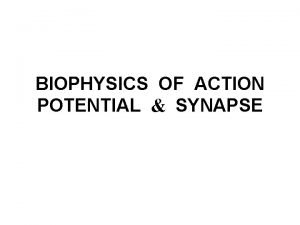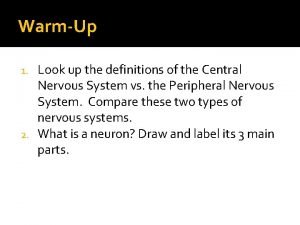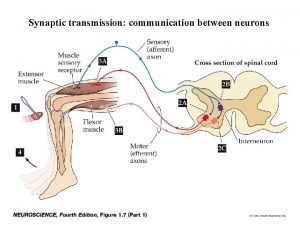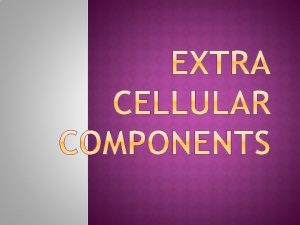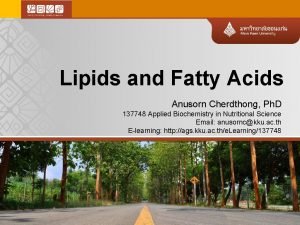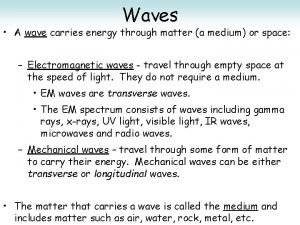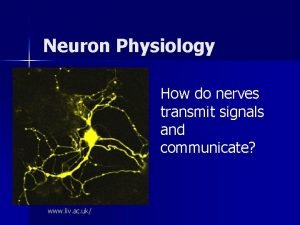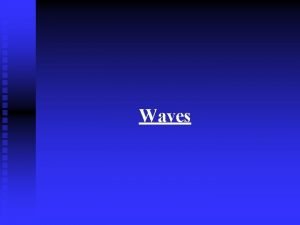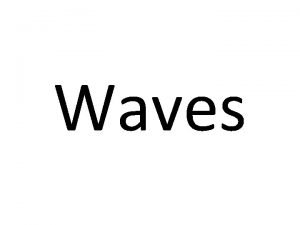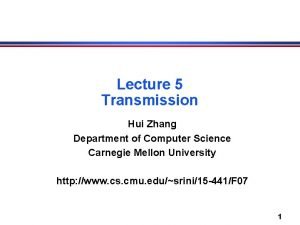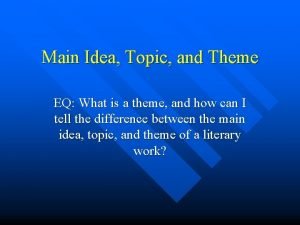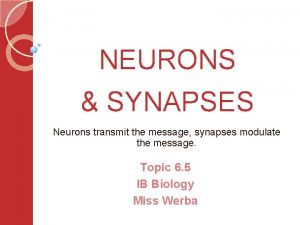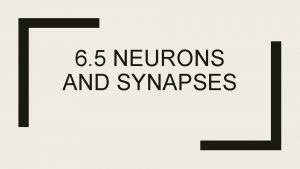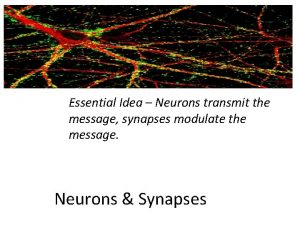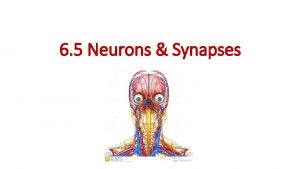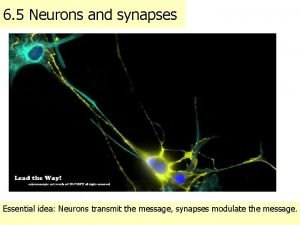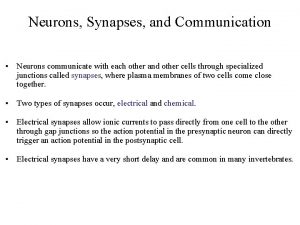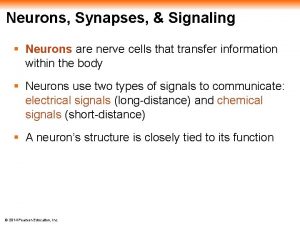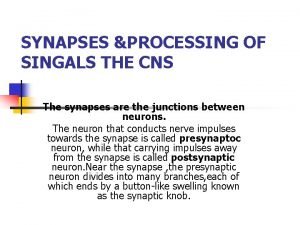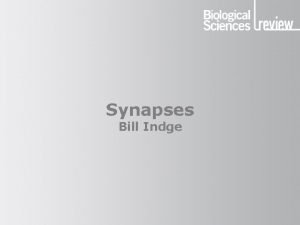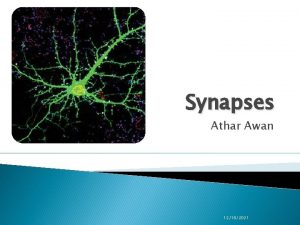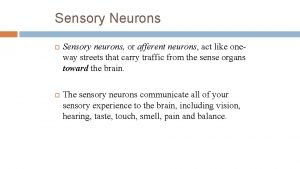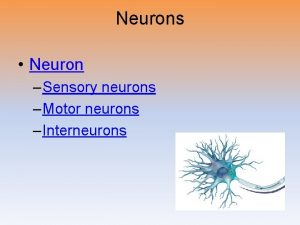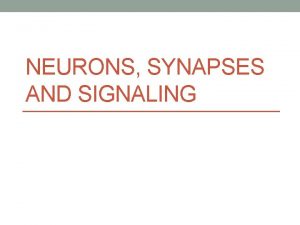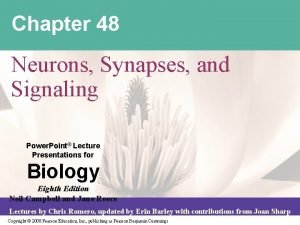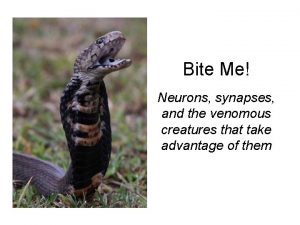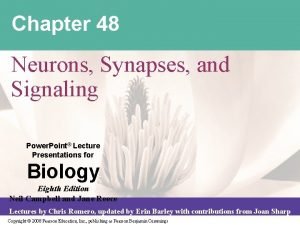Neurons and Synapses Essential idea Neurons transmit the





























- Slides: 29

Neurons and Synapses Essential idea: Neurons transmit the message, synapses modulate the message.

Synapses are junctions between neurons and receptor or effector cells. The Synapse • This is the name of the space between the axon of the pre-synaptic neuron and the dendrite (or cell body) of the post -synaptic neuron that is receiving the signal. synapse

Definition: It is the site of functional contact b/w two neurons at which an electric impulse is transmitted from one neuron to another.

Types of synapses- on the basis of site of contact • 1. Axodendritic synapses (most common type) • 2. Axosomatic synapses • 3. Dendrodenritic synapses • 4. axosaxonic synapses


Types of synapses- on the basis of method of signal transmission • Chemical synapses: • • Most common type • • Signal transmission is delayed for about 0. 5 msec in these synapses. • Electrical synapses (nexus): • • Less common • • Flow of ions from one neuron to another via gap junctions.


Anatomy of a typical synapse (synaptic morphology) • Axon terminals • Pre-synaptic membrane • Post-synaptic membrane • Synaptic cleft (20 -30 nm wide) • Synaptic vesicles

When presynaptic neurons are depolarized they release a neurotransmitter into the synapse. What happens at a synapse? • An action potential cannot cross the synaptic cleft, and instead the nerve impulse is carried by chemicals called neurotransmitters. • Neurotransmitters are made by the neuron that is sending the impulse (the pre-synaptic neuron) and stored in synaptic vesicles at the end of the axon. • The cell that is receiving the nerve impulse (the postsynaptic neuron) has chemical-gated ion channels in its membrane, called neuroreceptors. • These have specific binding sites for the neurotransmitters

When presynaptic neurons are depolarized they release a neurotransmitter into the synapse. Synapse

Neurons pump sodium and potassium ions across their membranes to generate a resting potential Overview of Process

When presynaptic neurons are depolarized they release a neurotransmitter into the synapse. How it works • 1. At the end of the pre-synaptic neuron there are voltage-gated calcium channels. When an action potential reaches the synapse these channels open, causing calcium ions to flow into the cell. • 2. The calcium ions cause the synaptic vesicles to fuse with the cell membrane, releasing their contents (the neurotransmitter chemicals) by exocytosis. • 3. The neurotransmitters diffuse across the synaptic cleft.

When presynaptic neurons are depolarized they release a neurotransmitter into the synapse. How it works • 4. The neurotransmitter binds to the neuroreceptors in the post-synaptic membrane, causing the channels to open. In the example shown these are sodium channels, so sodium ions flow in. • 5. This causes a depolarisation of the post-synaptic cell membrane, which may initiate an action potential.

When presynaptic neurons are depolarized they release a neurotransmitter into the synapse. How it works 6. The neurotransmitter is broken down by a specific enzyme in the synaptic cleft. The breakdown products are absorbed by the pre-synaptic neuron by endocytosis and used to re-synthesize more neurotransmitter, using energy from the mitochondria. This stops the synapse being permanently on.

Events occurring at a chemical synapse during signal transmission (Synaptic Transmission Mechanism)

Secretion and reabsorption of acetylcholine by neurons at synapses. • acetylcholine is a neurotransmitter found between neurons and muscle cells (and other places) • 2 parts: – acetyl (from respiration) – choline (from diet) • it travels across the synapse to bind its receptor • however, the enzyme acetylcholinesterase rapidly breaks down acetylcholine in the synapse (into choline and acetate) • Choline is absorbed by pre-synaptic neuron and re-used to make more acetylcholine.

Blocking of synaptic transmission at cholinergic synapses in insects by binding of neonicotinoid pesticides to acetylcholine receptors. • neonicotinoids = an insecticide – synthetic chemical similar to nicotine • binds the acetylcholine receptor irreversibly • leads to paralysis and death in insects • neonicotinoids very widely used (because safe for mammals) • but it’s non-specific, so it also kills helpful insects (like bees).

EPSP and IPSP • Depending on type of neurotransmitter & type of change in permeability of post-synaptic membrane, post-synaptic neuron is either excited or inhibited. • Neuro-transmitter binds with receptor on post -synaptic membrane opening of ion channels localized change in membrane potential post-synaptic membrane potential (PSP) • 2 types : Excitatory (EPSP), Inhibitory (IPSP).

EPSP • Resembles EPP (end plate potential). There is localized hypo-polarization due to Na+ influx. • Resting potential of cell body of neuron is • -65 m. V. • When EPSP is produced hypopolarization potential becomes less negative reach threshold of excitation (-45 m. V) ACTION POTENTIAL in cell body.

Purpose of EPSP • To bring potential of membrane to threshold • (-45 m. V) • It is graded like EPP (directly proportional to amount of neurotransmitter released).

IPSP: • Produced when post-synaptic neuron is inhibited. • Neuro-transmitter is of inhibitory type (GABA. Glycine) • It binds with receptors on postsynaptic membrane change in permeability of membrane for K+ or Cl- (there is opening of K+ or Clchannels efflux of K+ cell becomes more negative hyperpolarization / IPSP. • Opening of Cl- channels extracellular Cl- moves into the cell more negative hyper-polarization / IPSP.

Effect of IPSP: • Because of IPSP, resting potential which is • -65 m. V, becomes -70 to -75 m. V Post-synaptic neuron is inhibited POST-SYNAPTIC INHIBITION. PRE-SYNAPTIC INHIBITION: • Synaptic knob has additional synapse with other nerve terminals release of inhibitory neurotransmitter from additional synapse synaptic knob is inhibited no further transmission from synapse now to post-synaptic neuron

Properties of Synaptic Transmission DALE’S LAW: • At a given synapse, only 1 type of neurotransmitter is released, it may be excitatory or inhibitory. • Later on it was found that in certain cases, release of additional substances at a given synapse • e. g. , in noradrenergic synapses: along with norepinephrine, some dopamine, neuropeptide Y & prostaglandins are also released.

LAW OF FORWARD CONDUCTION: • Through synapses, impulses are conducted always from pre-synaptic to post synaptic neuron, never in backward direction. • (NO REVERSE GEAR!!) SYNAPTIC DELAY: • At a synapse, there is delay due to time taken in events during synaptic transmission. Through each synapse, there is delay of 0. 5 milli seconds.

FATIGUE OF SYNAPTIC TRANSMISSION • If impulses are conducted through a synapse repeatedly fatigue due to exhaustion of stores or progressive inactivation of receptors on post-synaptic membrane. • Significance of fatigue? ? • Fatigue of synaptic transmission is protective in nature termination of epileptic fit

IN UNITY RESTS STRENGTH! SUMMATION: • Adding up of effects of stimuli particularly if stimuli are sub threshold. • On a single motor neuron, thousands of synaptic knobs terminate to form synapses. • About 80% of these synapses are on dendrites, remaining on cell body & few on axons. • So, single impulse coming to motor neuron through a synapse, can’t excite a motor neuron & there must be summation of effects of stimuli.

TEMPORAL • Impulses transmit through 1 or few synaptic knobs repeatedly effects on post-synaptic neurons are added stimulation. • Second stimulus must fall when effect of 1 st one is still there

SPATIAL • Impulses are conducted along a number of synapses simultaneously effects on postsynaptic neuron are added excitation.

ALKALOSIS INCREASE EXCITABILITY OF SYNAPSES, ACIDOSIS DEPRESSES SYNAPTIC TRANSMISSION Increase excitability • Caffeine (cerebral stimulant) • Theophylline • Strychnine • Decreased calcium (tetany) Decrease excitability • Anesthetics • Hypoxia • Increased calcium (stabilize the membrane)
 Chapter 48 neurons synapses and signaling
Chapter 48 neurons synapses and signaling Chapter 48 neurons synapses and signaling
Chapter 48 neurons synapses and signaling Nucleic acids
Nucleic acids 2 types of synapses
2 types of synapses How is one-way conduction at synapses ensured
How is one-way conduction at synapses ensured Function of synapses
Function of synapses Synapses telecom
Synapses telecom Functions of a synapse
Functions of a synapse Synapse
Synapse Summation of postsynaptic potentials
Summation of postsynaptic potentials Bioflix activity: how synapses work -- events at a synapse
Bioflix activity: how synapses work -- events at a synapse Chemical synapses
Chemical synapses Part of nervous system
Part of nervous system Layers of cell wall
Layers of cell wall Essential non essential fatty acids
Essential non essential fatty acids How does the approaching ceremony of twelves affect jonas
How does the approaching ceremony of twelves affect jonas Transmit diversity in lte
Transmit diversity in lte Waves that transmit energy through matter or empty space
Waves that transmit energy through matter or empty space Neuron physiology
Neuron physiology Cel care primeste mesajul în dialog este
Cel care primeste mesajul în dialog este Automatic transmit power control
Automatic transmit power control Transmit waves
Transmit waves Mechanical and electromagnetic waves
Mechanical and electromagnetic waves Transmit light
Transmit light Hui transmit data
Hui transmit data Whats the central idea
Whats the central idea Main idea and controlling idea
Main idea and controlling idea What is the difference between topic and theme
What is the difference between topic and theme What is irrelevant sentence example
What is irrelevant sentence example Example of main idea
Example of main idea
